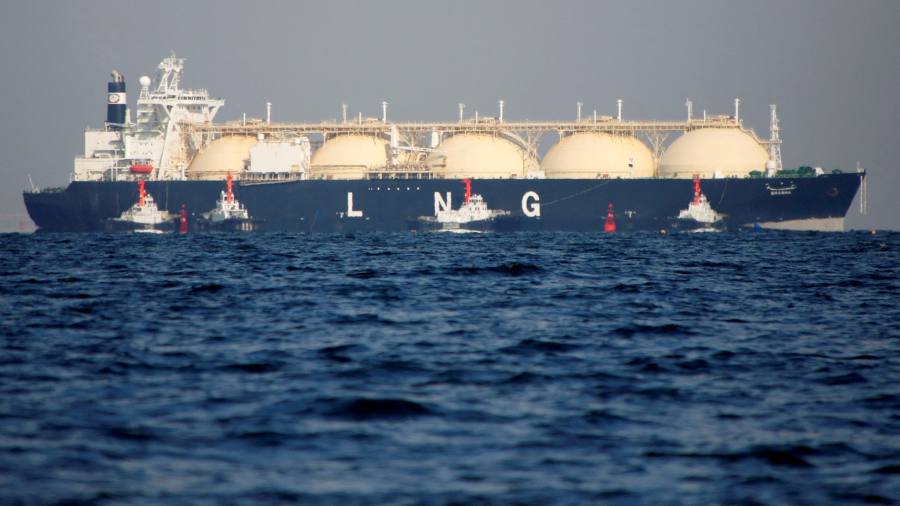Receive free Natural gas updates
We’ll send you a myFT Daily Digest email rounding up the latest Natural gas news every morning.
This week’s violent surge in European gas prices underscores how the region’s success in weaning itself off Russian energy has left it more vulnerable to the ebb and flow of volatile global energy markets.
Europe managed to avert an energy crisis last year by rapidly increasing imports of liquefied natural gas. The seaborne fuel replaced the flow from Russian pipelines after the Kremlin cut off the majority of supplies in an escalating energy confrontation following its invasion of Ukraine.
But the newfound dependence on LNG, which is a global commodity, has left European energy prices more sensitive to supply disruptions from around the world — even as far afield as Australia.
European natural gas prices surged nearly 40 per cent on Wednesday as the prospect of strikes at multiple large Australian LNG projects — collectively providing about 10 per cent of global seaborne gas supplies — sent panic through markets.
Analysts said the move was particularly sharp because many traders had been betting on further price declines, and were forced to abruptly ditch their short positions when the market moved against them.
For energy analysts the move confirmed Europe’s new reality: the gas supplies it relies on, like oil, are now truly global.
“The potential for strike action at LNG export plants in Australia once again highlights the fact that we are now clearly in a globalised gas market,” said Tom Marzec-Manser at energy consultancy ICIS. “Europe has understandably backfilled Russian pipeline supply with versatile LNG. But that versatility leads to increased price volatility.”
Goldman Sachs, one of the most influential banks in commodities, is warning European prices could double or even triple this winter.
Prior to the Russian invasion of Ukraine, what happened in Asian gas markets only had a limited impact in Europe, where cheap and plentiful Russian pipeline gas meant the continent was only a minor buyer of LNG. In 2021, the super-chilled fuel only accounted for about 20 per cent of the EU’s overall gas imports, data from think-tank Bruegel showed. Russian gas accounted for 40 per cent.
But Russia’s invasion of Ukraine has shifted the balance profoundly. LNG made up 34 per cent of the EU’s gas imports last year and that total is expected to rise again in 2023 to 40 per cent — giving it the same importance Russian gas once had.
LNG from Australia rarely makes it directly to European shores, as the length of the voyage makes high shipping costs uneconomic.
But if buyers of Australian gas in Asia need to hunt for alternatives it will pitch them directly into competition with Europe and its newfound thirst for the fuel. Japan, China and South Korea are some of the world’s biggest LNG importers.
“A lot of US volume?.?.?.?which are currently being sent to Europe, could be taken to Asia, raising the risk of an inter-regional bidding war,” said Kaushal Ramesh, head of LNG analytics at Rystad Energy.
Prices on the Title Transfer Facility, the European gas benchmark, fell 7.5 per cent to €36.6 per megawatt hour ($11.7 per million British thermal units) on Thursday.
Storage, which is critical for meeting winter demand, is close to 90 per cent full, and could reach capacity in the next month or so, analysts have predicted — weeks before the heating season starts.
While Europe sits on a comfortable level of reserves now, “the market remains unstable as this winter could still turn out severe and rapidly deplete storage”, Ramesh said.
Additionally, storage alone cannot meet demand in the winter, and Europe would still need to continue importing huge amounts of LNG.
European gas prices will need to be higher than prices in Asia to incentivise traders to send LNG to Europe.
Goldman Sachs analyst Samantha Dart said that if the Australian strikes go ahead it would require “much less of a weather impact to take [European] storage below average by the end of March 2024”.
She added that a TTF price range of €68/MWh to €97/MWh in the winter “would be likely until we know more about winter temperatures”.

